One of the biggest time savings I have achieved comes from the decision to set up an office at home. Besides a saving of $10,000 in annual rent, I save 45 minutes every day on the commute. This corresponds to 50 effective working days per year.
By success, I understand that you achieve your goals. These are
The tools
- A mind map
- My P&L statement and balance sheet
- My business model
- My calendar
I document all observations, conclusions and decisions in a mind map. It allows me to maintain an overview of both the retrospective analysis, the forward-looking assessment and the associated plan on a single (although jam-packed) page.
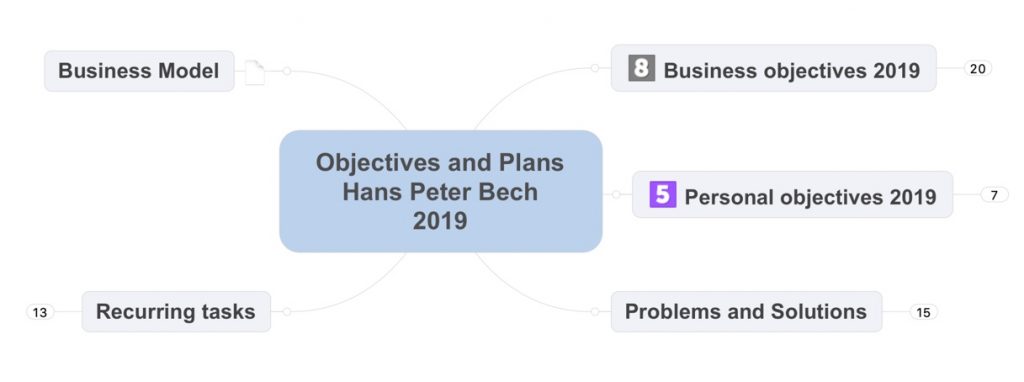
I use the MindManager program from the company Mindjet, but many other alternatives can do virtually the same.
Step 1: Current Goals and Results
Before looking ahead it is a good idea to look back.
Which goals did I set the last time I was in the helicopter (I was up there in March, June and October 2018)? Which goals did I achieve, and on which did I fail? Why did I reach some but not others? Could a change in behaviour and another priority of the activities have made a difference?
There are conditions in the environment that we do not control and that affect our results. However, it seems that you always attribute your genius to the goals you achieved while using changes in the environment to explain the deviations from the goals you failed to meet. If you make mistakes (and you do that throughout your life), and if you take responsibility for them, then you can learn to become better at reading trends in your environment and assess how they will develop. It is only the mistakes that you take responsibility for from which you can learn. Therefore, it is a good idea to assume responsibility for all errors and deviations. You get better at setting goals and intervening earlier when you find that the direction is wrong and circumstances have changed.
Retrospectively, there were goals I reached in 2018, and there were goals I did not achieve. After the analysis, I know more about where I went wrong and where I was spot on.
Step 2: New Goals
Based on the performance analysis, I proceed to formulate my goals for 2019. Many years of practice have taught me that the goals must be SMART. That is, Specific, Measurable, Advanced (usually A stands for Accepted, which applies to goals formulated for others, but in my case I use the A to push me forward performing something I haven’t done before) , Realistic (it’s hard, but with practice you get better at setting the bar high, but not too high) and Timed (when should a goal be reached, and how can I continuously follow up that I’m on the right track?).
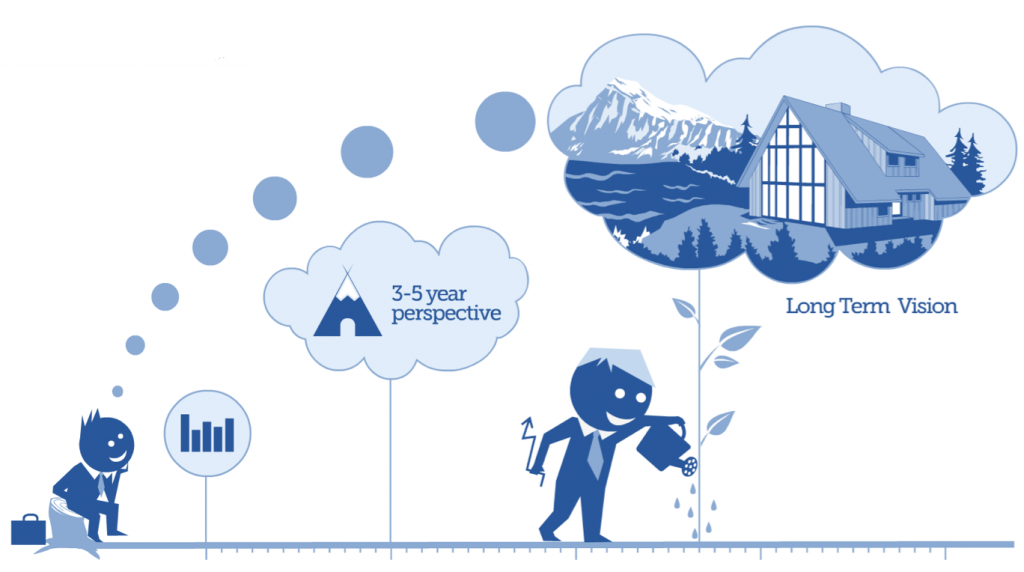
Goals are not just financial goals. Far from it. In my case, not at all. For example, I want to publish two books in 2019 (there are two separate goals). I can quite easily estimate the expenses and time required for research, writing, editing, production and marketing. However, guessing how many copies they will sell is impossible. Guessing how many keynotes and workshops they will generate is also impossible. So I don’t spend a minute on that. I must have the budget to cover the cost of getting the two books on the street. That’s all. In December 2019, I will know how the market received the books, and I can better assess what they will bring in 2020.
For 2019, I have formulated a total of eight business goals and five personal goals. I write them into my mind map.
Step 3: The business model
I use the Alexander Osterwalder business model framework, so after looking back and ahead, I bring up my business model canvas (which also is a mind map) and check if something needs to be adjusted. There always is.
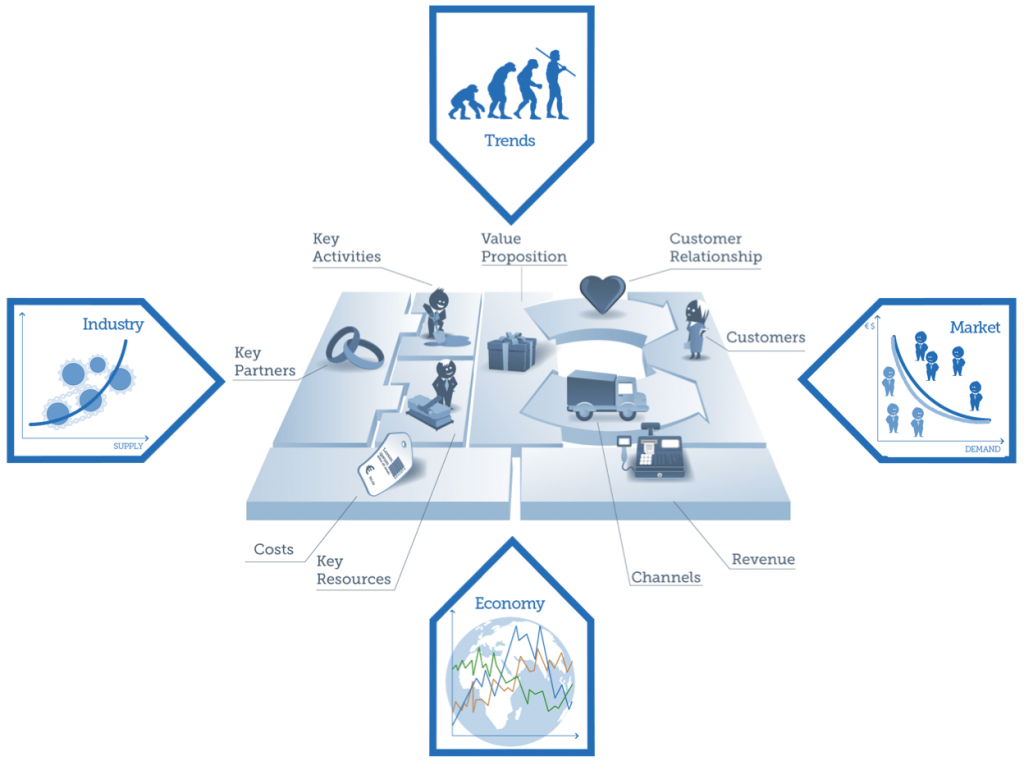
First, I take a quick tour of the Business Model Environment (the four areas that surround the model). Are there conditions in the environment that will affect me in 2019? Are there issues that pose a threat? Are there conditions that open up new opportunities?
That analysis is always rewarding. Maybe because I work exclusively with IT companies where the rate of change takes place at lightning speed.
Overall, the development in my environment is very conducive to the type of business I run. The threats are few and the possibilities almost limitless. Just take my books which are selling around the world. The development in IT technology makes production and distribution still cheaper. It is easy to find qualified freelance resources for the tasks I cannot undertake myself (editorial, proofreading, illustrations and pagination). Correspondingly, ongoing marketing becomes harder because noise levels are rising and social media are changing their algorithms to hinder organic sharing (their business model is to charge me for communicating with my network). On the other hand, the many years that I have blogged on my core subjects now pays off. An increasing amount of traffic comes from organic search, just as I continuously improve the quality of connections on LinkedIn, Twitter and Facebook, so they fit better with my primary target audience, (which has been the same for the past 15 years).
Fifteen years ago, my main product was consulting services. Today it is (1) books, (2) keynotes and (3) workshops. It has required ongoing adjustments to my business model and demanded that I learn new disciplines and forged new partnerships. For 2019, my goals mean that I can only devote a few days to consulting services, so I have decided what types of tasks I will take on, and carefully documented the conditions I can offer. This pre-analysis makes it easier and faster to respond to inquiries.
If you have not yet completed an analysis of your own or your company’s business model, then Alexander Osterwalder has developed many excellent tools that can help.
I maintain and document my business model in a separate mind map that I link to from my 2019 plan. You can also use Strategyzer, which is Alexander Osterwald’s tool.
Step 4: What should you do more and what should you do less?
As is also apparent from Alexander Osterwald’s business model framework, it is activities that lead to results. Learning how these relationships work is the key to all success.
With my goals and KPIs defined, I can now consider which activities should ensure that I can meet my ambitions for 2019. I have learned that three simple questions can help with the process:
- What should I stop doing?
- What should I do more of (including new activities)?
- What should I do less of?
Some activities are much tighter related to results than others.
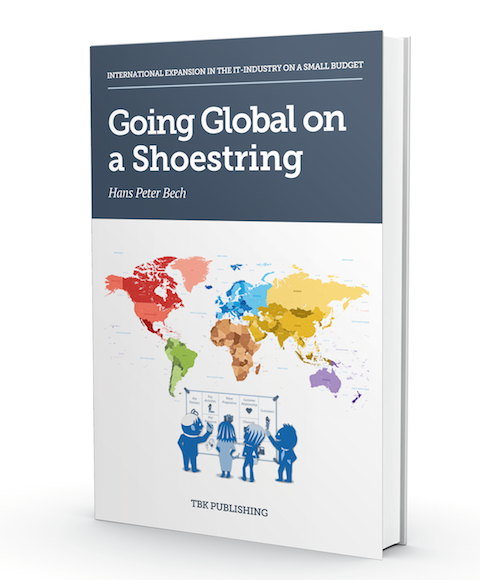
One of my goals is, as mentioned, to write two books in 2019. I have already done most of the research for the first book, and I know exactly which activities to complete ensuring that it can be published on a specific date. The other book is only at the idea stage, but I have written enough books to know what it takes to get it published in 2019. In this area, there is a very close relationship between activities and goals, also because I have, in the main, full control over the process.
I also have a goal to sell copies of the books I have already written. Here the relation between activities and goal fulfilment is much more difficult to determine. In retrospect, it is somewhat impossible to comprehend what leads to the purchase of my books. I have some ideas on how the relationship works and which activities best stimulate the AIDA process (Awareness -> Interest -> Desire -> Action). In 2019 I will test some new ideas I have to achieve that goal.
Step 5: Doing it yourself or outsourcing?
One of the significant advantages of running a small business like mine is that I am very close to the activities that affect goal fulfilment. However, there are activities that I cannot do, and then there are those I do not want to do.
In my many years as a solo practitioner, I have established a network of skilled freelancers who help with activities that I have decided not to do myself. It is web design and maintenance, editing of books and other publications, proofreading, graphics work including setting up publications and communication with non-qualified leads.
Previously, I also outsourced accounting, but with the development of IT tools for automation of bookkeeping, time consumption has been reduced to a few hours a month. Moreover, it’s an activity I like. In this way, the accounts are always up-to-date, and I am in full control.
Step 6: The Calendar
Now comes the difficult one.
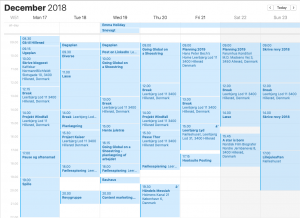
Activities take time, and time is the most democratically distributed resource we have. Twenty-four hours a day, seven days a week for us all. Everything takes time, and time is the most scarce resource I have. If you can learn to dedicate your time working towards your goals (those you have set yourself), you will be able to perform miracles. My experience is that counting hours is not sufficient. You will overestimate how much time you have available and underestimate how much time you spend (or waste?) on activities that have taken on a life of their own. It seems much better to insert time blocks into the calendar because then you force yourself to:
- Assess which activities deserve your limited time
- Which goals these activities are related to
- How much time to spend
- When it should take place
Blocking hours in your calendar does not mean that you cannot move things around, but it is a healthy learning process. It forces you to consider whether to replace an activity in favour of another, where the original activity should go and if you have under/overestimated the time spent on activities. I have my calendar booked completely out a month ahead, and every Monday morning I book an additional week.
From my many years in business, I have to say that most people are caught in this trap:
- They overestimate how much time they have available
- They underestimate how long time things take (things take time)
- They underestimate how slow the environment responds to their activities
The result of this reality distortion is that most plans are not implemented on time and that goals and budgets are not achieved.
The calendar exercise helps me to reduce the distance between my ambitions and reality. In this way, I have achieved goals I had not believed possible in my wildest imagination just a few years earlier.
Step 7: Tools
Besides the jobs that I have outsourced to a number of freelancers, my activities are closely related to me personally. If I want to do more in less time (and I do!), then I have to adjust my behaviour as well as learn how to use new tools.
Within my area, there has been no less than a revolution in the development of tools for improving productivity.
One of the biggest time savings I have achieved comes from the decision to set up an office at home. Previously I had an office in the centre of Copenhagen. Besides a saving of $10,000 in annual rent, I save 45 minutes every day on the commute. This corresponds to 50 effective working days per year.
An equally great time saving is achieved by being almost hysterically mean with physical meetings. If I have to get out of the office and take a 1-hour meeting, it will consume half a day. Physical meetings are reserved for activities with very high priority.

Fortunately, technology has made the most of the type of meetings that I have to make redundant. A good example of this is a job I completed for an American company just before Christmas. They wanted a couple of fresh eyes to do a health check on their channel activities. I conduct many health checks in different business areas and have developed a process that does not require us to meet physically. Instead, we use web meetings where we share screens and discuss the issues that we have chosen to focus on. The task for the Americans, that took a few months, involved people physically located across the United States and in Europe. If the meetings should have been physical, the price of my participation would have been significantly higher, my client’s internal costs would have been much higher and the logistics of the project close to impossible.
Not all meetings can be replaced by web meetings, and there is always something lost when you are not sitting face to face. But the savings in time and money mean that with a change in preparation and meeting management, it makes sense changing most physical meetings to web meetings.
Similarly, I use web-based collaboration tools like Basecamp, Trello and Jive as well as file sharing via OneDrive, GoogleDocs, Dropbox or iCloud. I wrote my first book in Microsoft Word, while all subsequent books were written in Scrivener. I handle literature references in Endnote. TextExpander and SaneBox save me many hours each week.
As most IT tools are launched in cloud-based SaaS formats, facilities for network collaboration are now also offered from within the applications themselves.
Step 8: The Budget
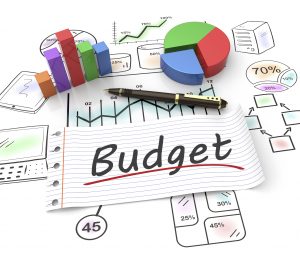
The planning process described above is not linear. On the contrary, I cycle back and forth until the plan is in balance. It always starts off with me wanting a lot more than what my time allows. In addition, things pop up along the way that are important for the situation analysis, and which in turn affect the subsequent steps.
After a few iterations through the first seven steps, consistency in the model is achieved, and as a side product, I get the budget for 2019.
In fact, the budget is merely the economic representation of the plan. By waiting to set the budget, you get thorough documentation of the assumptions. I have participated in many business reviews, where we had to address deviations from the budget, and where precisely the lack of documentation of the assumptions made the discussions meaningless.
Step 9: Follow-up
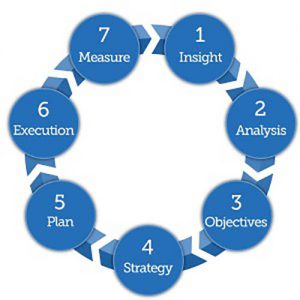
No plans survive the meeting with reality. The plans in the drawer that never see the light of day quickly become obsolete. I would venture the assertion that the primary source of plan deviations is our inability to do what we set out for. Next, we misjudged what effect our activities have on goal achievement. In the third place, unforeseen changes occur in our environment. Only by following up regularly (I follow up once a week) can we keep focused, ensuring that we reach most of our goals and learn from the process.
How long will it take?
The process described takes 2 days in December and June, half a day in March and October, and an hour each week. If bigger things happen, I spend an extra half a day considering, revising and documenting a new version of the plan.
Enjoy and Happy New Year.
